In the world of custom fabrication, the finishing cut is what transforms a raw material into a functional product. While die cutting and kiss cutting are well-known in the sticker and label industry, a third, critical application exists for double-sided tape. Understanding the strengths and weaknesses of each method is key to selecting the right tool for your project.
This article provides a balanced look at these three precision cutting techniques.
Quick-Reference Comparison Table
1. The Standalone Star: Die Cutting
What it is: Die cutting uses a hardened steel rule die to cut completely through a material and its carrier or backing liner. The result is a part that is fully freed from its surrounding matrix.
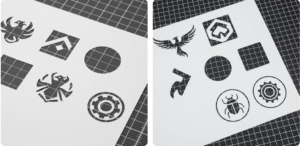
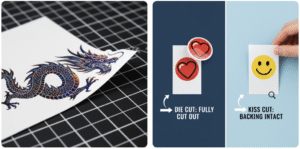
Die cutting is the champion of visual identity. Its ability to produce unique, border-free shapes makes it irresistible for branding. However, this comes at the cost of higher waste and potential challenges in handling and applying delicate pieces.
2. The Efficient Organizer: Kiss Cutting
What it is: Kiss cutting is a study in precision and restraint. The blade is calibrated to cut through only the top layer of material (e.g., vinyl) while perfectly “kissing” but not cutting through the underlying liner paper.
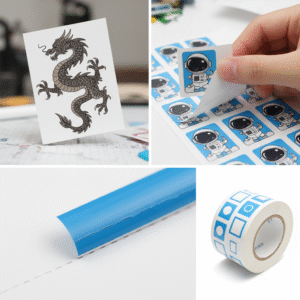
Kiss cutting is the backbone of efficiency. It prioritizes organization, protection, and ease of use for the end-user, making it ideal for functional applications. Its main compromise is the aesthetic one—it cannot achieve the pure, borderless form of a die-cut item.
3. The Invisible Engineer: Die Cut Double-Sided Tape
What it is: This process uses a die (often a precision laser die) to cut through both layers of a double-sided tape: the adhesive foam or film and its protective liner(s). This creates a custom-shaped piece of tape, ready for application.
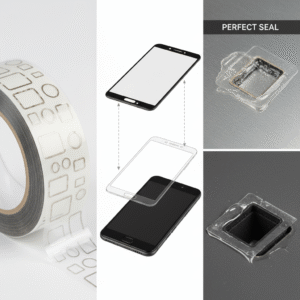

Die cut double-sided tape is not about aesthetics but about performance and precision. It solves critical engineering challenges in manufacturing: preventing adhesive mess, ensuring consistent bond thickness, and enabling rapid, automated assembly. Its limitations are its specialized nature and cost, but these are often justified by the value of a reliable, clean bond in high-stakes applications.
The Final Verdict: Choosing Your Champion
The choice between these three methods is a strategic decision based on the product’s ultimate purpose:
-
Choose Die Cutting when the visual form and tactile feel of the item are the primary goals. It is the product.
-
Choose Kiss Cutting when function, efficiency, and user-friendliness are paramount for a label or sticker that lives on another product.
-
Choose Die Cut Double-Sided Tape when the goal is invisible, structural performance. It is a critical component in the assembly process, prized for its precision and reliability in creating bonds.
By understanding the distinct philosophy and trade-offs of each technique, designers and engineers can make empowered decisions, ensuring their vision is realized with the most effective and appropriate manufacturing process.
Feature Image Concept Description
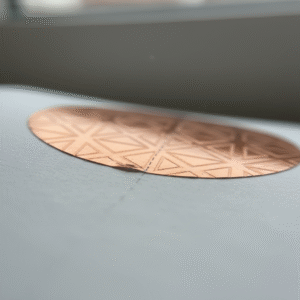
Composition: The image is split into three distinct sections on a clean, white background.
-
Left Section (Die Cutting): Features a bold, custom-shaped sticker (e.g., a company logo in the shape of a shield) that has been completely die-cut. It is shown slightly lifted off its backing, casting a small shadow to emphasize its three-dimensional, standalone nature.
-
Middle Section (Kiss Cutting): Shows a hand holding a sheet of four identical rectangular product labels. One of the labels is being neatly peeled back, revealing the continuous, uncut backing paper beneath it.
-
Right Section (Die Cut Double-Sided Tape): Displays a precision die-cut piece of white foam tape in a complex U-shaped bracket form. It is shown mounted on its blue protective liner, with a smartphone component (like a camera module) positioned above it, ready to be pressed down and bonded.
Visual Cues: Each section has a subtle icon: a scissors for Die Cutting, a perforation line for Kiss Cutting, and a gear/engineering symbol for Die Cut Double-Sided Tape. The overall tone is clean, professional, and informative, providing an at-a-glance understanding of the three processes.

